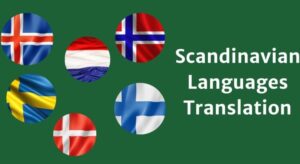Are you thinking about how to expand your business globally and reach new customers? You should consider translating some of your business assets. Doing so can help you reach a whole new audience and tap into previously unreachable markets.
What do you have to do to accomplish that?
Choose the right language set
To get started, you must first select the languages you want to translate your content into. English to Spanish, English to German, English to French? Or all from English to all of them?
Make sure you take into consideration the different language variations. If you are approaching France, for instance, you must use European French translators while if you are targeting the Canadian market, you should work with Canadian French translators who will be able to adapt the content to the specific market required, in this example, to France or Canada.
Also, it happens the same if you want to translate your content into Spanish. This is also a language with many variations, depending on the country you target. All of them speak Spanish, but there are small differentiation’s from country to country Make sure you ask about these factors as they are crucial when marketing abroad.
Choose the right assets to translate
You’ll need to make a plan regarding the assets to be translated. Think about all the touchpoints your business has and decide what is the most important one to translate.
You may consider the following:
Company website. Your company website is your client interface. You may want to consider translating that into the target language. Are you a law office? Hire a legal translator! Are you a manufacturing plant? Hire a technical translator! Make sure you have your content validated by your internal staff before being sent for translation to avoid time consumption and additional costs.
Software: if your business has a software app developed, consider localizing it to make it more user friendly on a global scale for your clients. Localization is a specialty since many things need to be addressed for each language such as graphics having enough room for text expansion; changes to data units, telephone numbers, date formats and capitalization; and adapting the software for right-to-left languages such as for the Arabic language and Hebrew language.
Technical Documentation: It may be useful for your customers to have technical documentation, such as “Getting Started” guides or brochures, operation manuals or online help translated into their local languages. Writers often use programs such as Adobe FrameMaker, Adobe InDesign, Madcap Flare or Microsoft Word to develop content. Of course, if you’re going to translate your technical content, you want to make sure your customers are reading it.
Marketing Content: Marketing content ranges from campaigns to brochures, to social media messages and content for your website. If you need marketing translations, make sure your team has experience with trans-creation. Unlike other types of translations, marketing translations require a certain level of creativity as with this content, the message is more important than the words themselves.
Choose the right budget for translation
Once you have determined your target markets, your language sets and your assets to be translated, you must choose a good translation agency or translation services provider to determine your costs. Each language pair and asset has its own costs as prices vary depending on many factors such as language pairs, volume, formatting, etc. You should choose the translation agency or translation services providers that can offer the highest quality translation standards and methodology to make sure your business is presented correctly.
Make a long term partnership with your translation services provider
Your language services provider of your choice should not only be able to help you get started translating your content, but also educate you along the way and provide tools and resources to make the process efficient.
And if you’re still lost in the translation, you are one phone call away! Just contact us for additional clarification!




